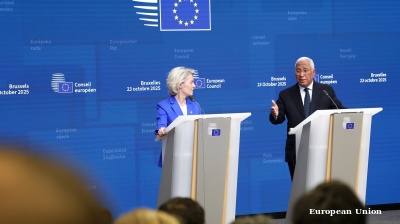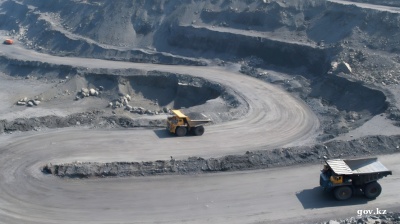Latin America and the Caribbean will expand 2.4% this year, the Economic Commission for Latin America and the Caribbean said on October 23, the second upward revision since April even as the region continues to struggle to escape chronically weak growth.
The UN agency lifted its 2025 forecast from the 2.2% projected in August, citing a "less adverse international environment" than initially feared. Yet ECLAC cautioned that the modest improvement does little to alter the fundamental diagnosis: external drivers of growth have decelerated and the region remains mired in what it first described last year as "a trap of low growth capacity"
“To break out of this situation, a more accelerated productive transformation is needed to fuel economic growth and productivity, diversify economies, and create more and better jobs,” the Santiago-based organisation said.
The upgraded projection reflects shifts in several key variables since the start of the year. Growth prospects for the region's main trading partners have improved somewhat, even as they slow from 2024 levels. Meanwhile, the impact of US tariff announcements has proved less severe than anticipated in April, when Donald Trump's "reciprocal tariffs" roiled markets.
However, ECLAC stressed that stubborn global inflation has delayed interest rate cuts by major central banks, whilst the dollar's trajectory in international markets has complicated the picture. Domestic factors — including limited room for fiscal and monetary stimulus, narrow productive bases and export concentration — have also contributed to divergent performances across the region.
The projections reveal stark disparities within Latin America. Mexico, the region's second-largest economy, is forecast to grow just 0.6% this year — the weakest performance bar crisis-hit Cuba and Haiti, which face contractions of 1.5% and 2.3% respectively.
ECLAC lifted Mexico's forecast from the 0.3% projected in August, citing more favourable international trade outcomes and stronger-than-expected US growth. Even so, the upgrade puts the country well behind other major international lenders: the IMF expects 1% growth this year, the World Bank 0.5% and the OECD 0.8%.
South America is set to outperform, expanding 2.9% in 2025, up from the 2.7% forecast in August. The revision reflects increased trade between the subregion and China, alongside a rebound in prices for precious metals and other extractive products.
Venezuela, Paraguay and Argentina are projected to lead South American growth at 6%, 4.5% and 4.3% respectively. But ECLAC downgraded its estimate for Argentina from a previously forecast 5%, warning that adjustment policies implemented by Javier Milei's government could limit the pace of expansion.
"The technical rebound will be positive but insufficient to reverse the loss of activity accumulated during the previous year," the report stated, noting that Argentina's recovery is based more on statistical comparisons with a disastrous 2024 than on improved productive fundamentals.
Brazil and Colombia are each expected to grow 2.5%, whilst Chile's GDP should expand 2.6%. Ecuador is forecast to grow 3% and Peru 3.2%, with Uruguay at 2.3% and Bolivia at just 1%.
Central America's growth estimate held steady at 2.6%, with Panama (4.1%), Costa Rica (3.8%), Guatemala (3.7%) and Honduras (3.7%) leading the pack.
The English- and Dutch-speaking Caribbean is forecast to expand 4.7% — or 1.9% excluding Guyana — up from 4.1% and 1.8% respectively in the August projections. The upgrade reflects stronger-than-anticipated tourism sector performance. Guyana itself is projected to grow 12.1% this year and a remarkable 24% in 2026, buoyed by its burgeoning oil sector.
For 2026, ECLAC held its regional projection unchanged at 2.3%. Should that estimate prove accurate, it would mark the fourth consecutive year of growth around that rate, producing average regional GDP expansion of just 1.6% for the decade spanning 2017-2026 — a historically weak performance.
The region's moderate economic performance will be reflected in sluggish labour markets, ECLAC warned. Employment is projected to increase 1.5% in 2025 and 1.2% in 2026, with formal job creation slowing.
Whilst slight reductions in labour informality and gender gaps are expected, both indicators will remain at elevated levels, pointing to structural challenges in regional labour markets.
ECLAC cautioned that downside risks continue to dominate the international outlook, including possible abrupt corrections in financial markets, fiscal sustainability pressures in advanced economies and additional trade disruptions. Such tensions could undermine monetary policy credibility at major central banks and affect interest rate trajectories.
Given this scenario, the organisation urged countries to preserve macroeconomic stability, strengthen fiscal and monetary institutions, and promote productive development policies aimed at boosting productivity and diversifying exports. It also called for expanded intraregional trade, sustainable investment and robust international cooperation to sustain the recovery and mitigate geoeconomic fragmentation.
The projections align broadly with recent forecasts from other multilateral lenders. The IMF estimates regional growth of 2.4% in 2025 and 2.3% in 2026, whilst the World Bank projects 2.3% and 2.5% respectively, still the slowest pace among the world's regions.

News

Palestinian ambassador pledges Iraqi embassy in Jerusalem
Palestinian ambassador pledges to open Iraqi embassy in Jerusalem as Iraq lays foundation stone for Palestinian ambassador's residence in Baghdad's new diplomatic quarter covering 300 hectares.

EU pledges ongoing support for Ukraine, defers decision on Russian assets
European Union leaders pledged continued financial backing for Ukraine over the next two years, but delayed a decision on tapping billions of euros in frozen Russian assets to fund Kyiv’s defence

Trump Administration striving to strike critical minerals deal with Kazakhstan
Pushing for US firm to win rights to develop major tungsten deposits.

.jpg)

-fotor-bg-remover-20251020114620.png)
_1760463463.jpg)
